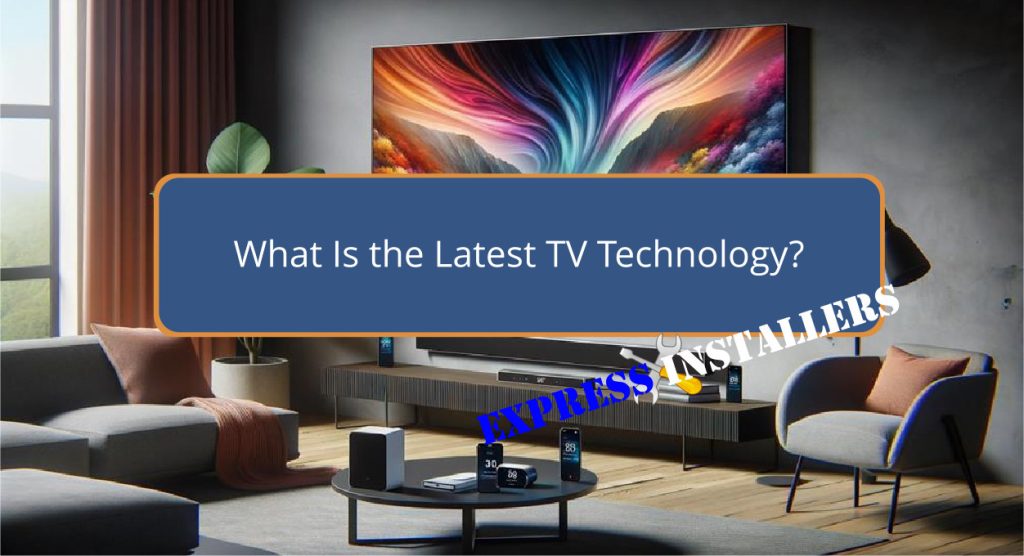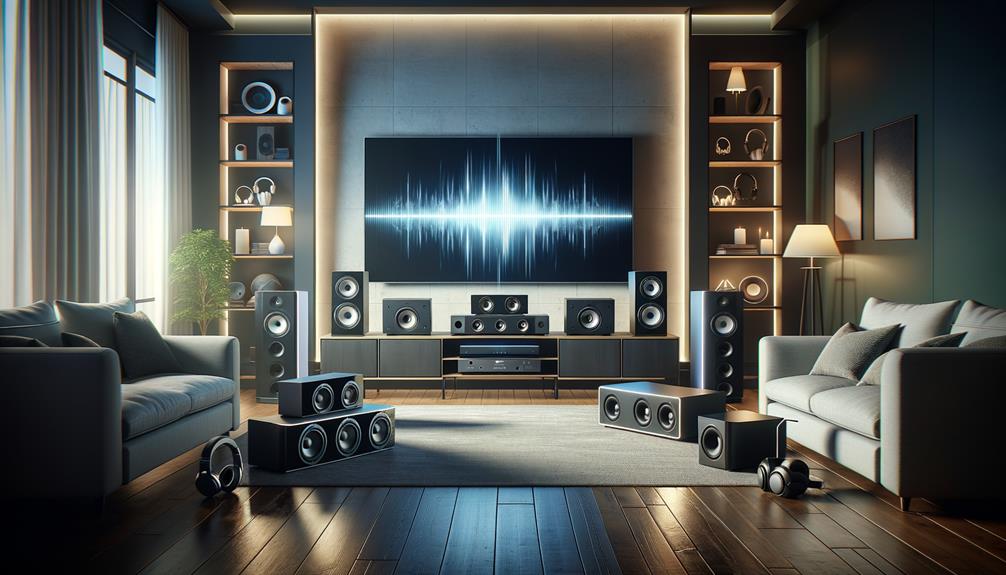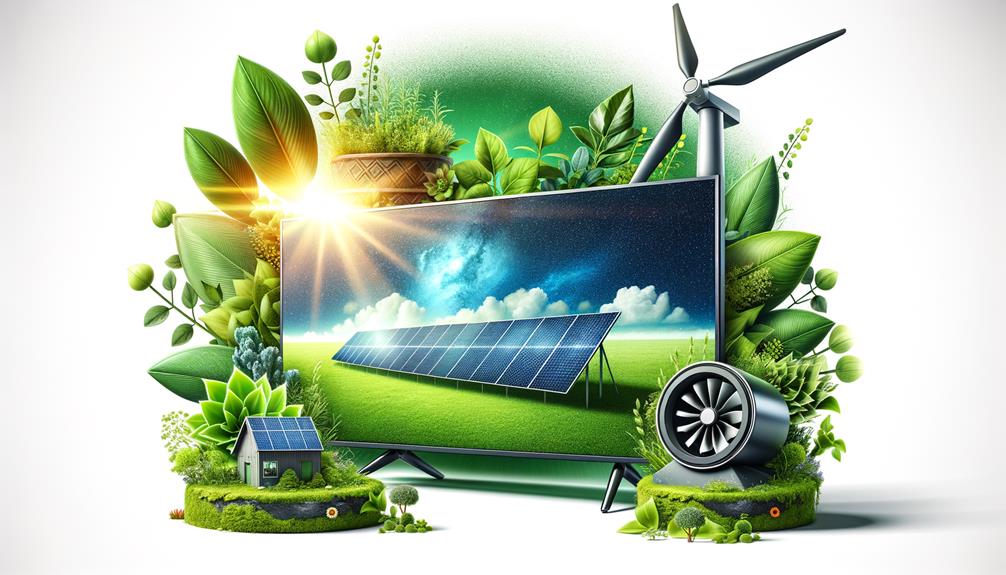
The latest television technology is epitomised by the introduction of QD-OLED technology, which combines quantum dots and OLED to deliver unprecedented brightness and colour accuracy.
Launched by Samsung in 2022, this innovation allows for meticulous lighting control and heightened contrast, enhancing viewer immersion.
Concurrently, the shift towards 8K resolution offers ultra-high definition, making the visual experience almost indistinguishable from reality.
Additionally, advancements in audio technology such as Dolby Atmos and AI-driven sound optimisation further enrich the auditory aspect of modern TVs.
These technologies pave the way for a transformative viewing experience, hinting at even more sophisticated capabilities on the horizon.
Quick Summary
- QD-OLED technology combines quantum dots with OLED for enhanced brightness and color accuracy.
- The shift to 8K resolution offers ultra-high definition for more immersive viewing experiences.
- Dolby Atmos and AI-enhanced audio technologies provide a three-dimensional sound experience.
- Smart integration features allow for voice-activated control and seamless multi-device connectivity.
- Environmental sustainability is prioritised with energy-efficient displays and recyclable components.
QD-OLED: A Hybrid Breakthrough
QD-OLED technology represents a significant leap in television display innovation, merging the superior brightness and colour accuracy of quantum dots with the deep contrast and energy efficiency of OLED.
This hybrid approach, initiated by Samsung in 2022, leverages the strengths of both technologies, optimising the visual output for an enhanced viewing experience.
By integrating quantum dots, which are microscopic semiconductor particles, the technology achieves unprecedented colour accuracy and brightness enhancement.
Further, the OLED integration allows for precise lighting control and contrast, creating richer blacks and vibrant colors.
The combination not only elevates the picture quality but also maintains energy efficiency, setting a new standard in the domain of premium television displays.
Evolution of Display Resolutions
The evolution of display resolutions in modern televisions has experienced a remarkable shift to 8K resolution, providing viewers ultra-high definition experiences with unparalleled clarity and sharpness.
This progression not only exemplifies technological innovation but also enhances consumer engagement with visual media.
- Vivid Details: Every pixel adds more depth and detail, making visuals almost lifelike.
- Enhanced Realism: The sharpness achieved with 8K advancements brings on-screen content closer to reality.
- Immersive Experiences: More pixels translate into more immersive viewing, enveloping the audience in the visual narrative.
- Cutting-edge Technology: 8K represents the pinnacle of current display technology, pushing previous boundaries.
- Increased Accessibility: As prices drop, more consumers can experience the pinnacle of visual clarity offered by 8K TVs.
Innovations in Audio Technology

Advancements in audio technology, such as Dolby Atmos, are revolutionising how viewers experience sound, enveloping them in a three-dimensional auditory space.
This immersive effect is achieved without cluttering living spaces with numerous speakers, thanks to virtual surround technology embedded in modern sound bars.
Additionally, AI enhancements actively optimise sound based on the content genre and the acoustics of the room, ensuring top-notch audio quality.
| Feature | Description |
|---|---|
| Dolby Atmos | Moves audio in a three-dimensional space around the viewer |
| Virtual Surround Sound | Creates cinematic experience with fewer speakers |
| AI-Powered Enhancements | Enhances sound quality for content and room acoustics |
| Adaptive Sound Technology | Adjusts audio in real-time to match scene dynamics |
| Voice Control | Allows audio adjustments using voice commands |
These innovations collectively enhance the auditory experience, making every viewing a rich, enveloping event.
Smart Integration and Connectivity
Smart integration and connectivity in modern TVs transform the user experience by facilitating seamless interaction with a broad array of smart home devices and content sources.
This evolution in television technology leverages connectivity advancements and smart TV versatility to offer users unprecedented control and customisation.
Voice control benefits include the ability to operate TVs and connected devices hands-free, enhancing accessibility and convenience.
- Voice-Activated Commands: Control lighting or adjust the thermostat directly from your sofa.
- Seamless Content Streaming: Effortlessly connect to streaming platforms for a vast selection of personalised content.
- Multi-Device Integration: Synchronise various devices for a unified multimedia experience.
- Smart Home Hub: Use your TV as a central command center for home automation.
- Enhanced Interaction: Engage with your TV using mobile devices for interactive gaming and learning.
Environmental Impact and Sustainability

Environmental sustainability in television technology has become increasingly pivotal as manufacturers like LG and Samsung incorporate eco-friendly practices and materials in their production processes.
OLED and QLED TVs, known for their energy efficiency, play a significant role in reducing carbon footprints by consuming less power and consequently minimising energy consumption.
These technologies not only contribute to lower electricity usage but also support sustainability through longer lifespans and the use of recyclable components.
This advancement aligns with global efforts to manage e-waste and promote responsible disposal of electronic goods.
By focusing on these aspects, the television industry is actively participating in the broader movement towards environmental sustainability, making strides in both reducing waste and conserving energy.
Future Trends in TV Tech
As we look towards the horizon, future TV technology is poised to dramatically transform our interaction with the digital world, offering increasingly immersive experiences.
The evolution of TV tech promises not only enhancements in how we view content but also in how content adapts to us, creating a uniquely personalised experience.
- Holographic Displays: Bringing a three-dimensional cinema quality to our living rooms.
- Real-Time Content Personalisation: Tailoring shows and advertisements to viewer preferences and moods.
- Advanced Projection Technology: Enabling screens to be displayed on any surface, enhancing flexibility in viewing.
- Seamless Integration: TVs that blend into personal and public spaces, almost invisible when not in use.
- Ubiquitous Access: Ensuring entertainment and information are always at hand, no matter the location.
Frequently Asked Questions
Which Is Better, 4K or QLED or OLED?
Determining whether 4K, QLED, or OLED is superior depends on specific needs. OLED excels in colour accuracy and viewing angles, while QLED shines in brightness and vibrancy. 4K refers to resolution clarity.
What TV Technology Is Best?
The best TV technology varies by screen size and viewing distance. OLED offers superior picture quality with perfect blacks, while QLED excels in brightness and durability, ideal for larger screens and brighter rooms.
Which Is Better, LED or QLED Vs OLED?
In evaluating LED, QLED, and OLED, consider energy efficiency and viewing angles. OLED excels in viewing angles and contrast, while QLED offers brighter displays, though LED remains most energy-efficient but with inferior visual performance.
Is Neo QLED Better Than OLED?
Neo QLED surpasses OLED in colour accuracy and peak brightness, making it ideal for bright environments. However, OLED maintains superior viewing angles and deeper blacks, catering to viewers prioritising contrast and immersive experiences.
Conclusion
To sum up, the advancement of television technology continues to evolve, incorporating sophisticated hybrid displays like QD-OLED, higher resolutions, and enhanced audio systems.
Integration with smart technologies and connectivity further enrich user experiences.
Meanwhile, manufacturers are increasingly addressing environmental concerns by adopting more sustainable practices.
As these trends progress, future television technology is expected to deliver even more immersive viewing experiences while promoting environmental sustainability and interconnected smart home ecosystems.
